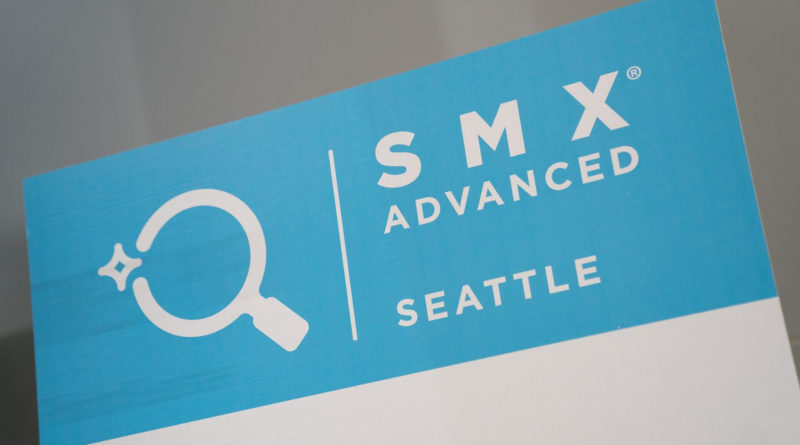Shopping campaigns: Play like every day is a holiday
What’s ahead for shopping ads this holiday season and beyond? Columnist Alexander Paluch recaps a session from SMX Advanced focusing on what search marketers need to know.
Shopping campaigns are becoming a major source of website clicks and revenue during the holiday season, and the “Shopping Campaigns: Play Like Every Day Is A Holiday” panel at SMX Advanced featured tips and advice from three PPC veterans: Ann Stanley, Todd Bowman, and Mona Elesseily.
Ann Stanley: Shopping ads, buy buttons, social commerce & remarketing
Shopping ads and buy buttons are everywhere. Stanley explored those areas where ads are driven by product feeds, and clicks either lead to retailer websites or convert on host platforms. Her talk was full of data insights and provided a neat map divided into three conversion areas:
Area #1: The search giants: David Bing vs. Goliath Google
Thanks to Windows 10, Bing Shopping ads share is growing (21% US, 9% UK). With Google Shopping winning by volume, Bing nearly always shows lower CPCs. In terms of conversion and ROAS efficiency, results vary heavily by vertical. Bottom line: if you target the US or UK, give Bing a try to see how effective it could be for you.
Area #2: Social commerce: growing ecosystem with many faces
Social commerce still carries the promise of incremental returns by opening the door for the impulse purchases in the digital world. Stanley subdivides the area into four main types, showing how the growth potential is backed up by a hugely diversified ecosystem:
- F-commerce: Retailers can offer their products within the Facebook environment. Shoppers can browse through the retailer’s product tree, liking and commenting on products as they go and putting them into a Facebook cart with checkout option.
- Buy buttons: Although Twitter has discontinued its buy button in favor of Dynamic Remarketing, other players like Facebook, Instagram and Pinterest still continue offering the ad format that allows brands to educate and sell at the same time.
- Dynamic remarketing: Facebook, Twitter and Instagram start the next generation of remarketing, where the shopper does not necessarily notice that he or she is being retargeted. In a nutshell: using a remarketing pixel, retailers inform the platform about what products users engaged with (looked at, put into cart, bought). They can retarget these users showing alternatives or complements to the products they interacted with — to cross or upsell. All of this is, of course, based on product feeds, dynamic ad creation and even works across devices.
- Social Shopping sites (Polyvore, Houzz, Opensky): These sites use peer-to-peer influence around different verticals (Fashion, Beauty, Jewellery, Home & Garden, etc.). Communities create content that inspires to buy. Merchants either directly offer their products or push these using paid features like sponsored promotions.
Area #3: Products and price buttons in display ads
Google starts using the Merchant Feed in many more areas: TrueView and the brand new Google Contextual Dynamic Creative carries product ads into YouTube videos and into the Display Network.
Use remarketing to tie channels together
To think omnichannel is the new, old marketing imperative. Wait, but how? With different channels managed by different departments, this is clearly a tough task. Stanley comes to the rescue by showing smart remarketing techniques:
- Retarget on Google Shopping. Try leveraging low-cost “honeypots” like educational offers (“Learn about how to…”) or open competitions (“Win these tickets / products”) to drive visitors from search, social or display to your site and create remarketing audiences in Google Analytics. Use RLSA in Shopping ads to retarget users when they express a buying intent on Google.
- Retarget on Facebook or Twitter. By using Facebook’s or Twitter’s retargeting tag, dynamic product ads can be shown on the social platforms, using additional audience targeting provided by the platform.
- Retarget on Display. Combine Google’s display campaigns for dynamic retargeting with dynamic ad units and overlay with Analytics remarketing audiences using “Target and Bid” to show display ads only to former tagged visitors.
Stanley also made it clear that a good feed management software is at the heart of being able to scale product ads across channels.
Todd Bowman: Strategies to take your holiday shopping campaigns to light speed
Bowman started to show how important PLAs have become, especially in terms of click share against text ads. For Non-Brand, it rose to a staggering 70% on Google, and 27% on Bing for U.S. paid retail clicks.
Collaborate to avoid a Death Star scenario
Given that importance, departments need to collaborate closely to succeed during special sales periods like Black Friday. As product data quality is at the heart of online sales, the Merchandising department needs to gather excellent product information from suppliers when buying the products. It is exactly that information that the Web Development needs to expose on the website.
Marketers’ task is to make sure the quality data is used properly, e.g. in the Google Merchant feed. Marketers also need to look at past data — when did clicks occur that drove sales? People are doing research for deals much earlier, and just pushing bids on cyber weekend will cause them to miss out on a lot of sales.
Shopping Ads: taking into account search query conversion probability is rewarded with more revenue and higher ROAS
When structuring Shopping campaigns, Bowman recommended analysing search queries and applying different bidding strategies: Generic queries like “Bluetooth Speaker” and a more targeted “JBL Bluetooth Speaker” may otherwise end up in the same campaign showing the same product and the same bid.
However, targeted traffic is more likely to convert and should thus be rewarded with a higher bid. That, According to Merkle, is a driver to affect the bottom line strongly in terms of revenue as well as ROAS. (At Crealytics, we focus on the same strategy and can confirm these findings.)
Brick-and-mortar stores benefit from strong click growth and high CTRs when using Shopping Local Inventory Ads — yet the value is hard to measure
When connecting offline and online, Local Inventory Ads (LIA) offer opportunities to traditional stores. Not only can a store be easily located on Google Maps, but also do LIAs provide a way for potential shoppers near the store to learn about products and availability.
Google is testing a lot of new Shopping features, including a “Buy online, Pick up in Store” currently in Beta. Bowman expects the majority of digital ads in the future be powered by feeds. Yet the biggest LIA challenge remains to track store sales and offline orders to measure the value of its clicks. At least measuring store visits is, as of now, no longer a vision, with Google offering a “Store visits” beta.
We at Crealytics also expect GTINs to play a major role in conversion attribution in the future. As Bowman notes: Google keeps being very serious about this number, rigorously disapproving products that fail to carry them in the feed after a 30-day grace period.
Mona Elesseily: Getting Better Bang for Your PPC Shopping Bucks
Elesseily provided a healthy a mix between Shopping present and future: tactics and useful tools for today, as well as an outlook on the next Google Shopping features for tomorrow.
Today: Combine Shopping with other ad formats, leverage Similar Audiences, and optimize for mobile
Combining Google Shopping & Dynamic Search Ads is a promising way to get additional shopping reach. Elesseily highly recommends to ask Google for help to set up additional DSA campaigns from the Merchant Center feed with their internal tools. Mix these with regular “backup” DSA campaigns to cover any product currently not in your feed. Bid low on the backup campaigns to avoid cannibalization, which can go up to a 25% in her experience.
As an estimated 74% of internet traffic will be video by 2017, YouTube should not be underestimated to leverage more reach. Combining Trueview for Shopping, layered with dynamic remarketing yield amazing results according to Elesseily.
In the past, “Similar Audiences” were only available for Display. But since the Google I/O Summit in May 2016, these are also available for Shopping, Search and DSA campaigns.
Intended to reach new customers, Similar Audiences are incremental and recent; audiences do not overlap with existing RLSA lists und remain 24 hours on the list only. Her bet is that you’ll have to include higher funnel audiences (e.g. cart abandoners) to get traction from Similar Audiences as lower funnel audiences (e.g. purchases in the last 30 days) will be too small to provide significant traction.
For Mobile optimization, Elesseily considers site speed a crucial factor. To get started, she recommends the official Think with Google tool, testmysite, which provides actionable recommendations customized to your site.
Tomorrow: More ad inventory, better offline attribution, conversational shopping and…
In addition to more Google inventory opening up for Shopping ads (like the image search) Driven by mobile and local initiatives, Elesseily sees online and offline growing together heavily. Beyond informing the shopper what he can expected to find in a store, better in-store attribution remains a core area of effort.
Siri Voice Search, Amazon Echo and Chat Bots will become more and more popular. This changes the way people shop today – towards something more of a conversation. Advertisers will have to find new ways on how to respond to shoppers’ questions.
On the long term, we can also expect Google Tango, an augmented reality framework, to bring new digital marketing opportunities into the game. It can project virtual products into images of the physical space in nearly real time – just think of examples like placing virtual furniture into a room to see if they fit before purchasing them.



